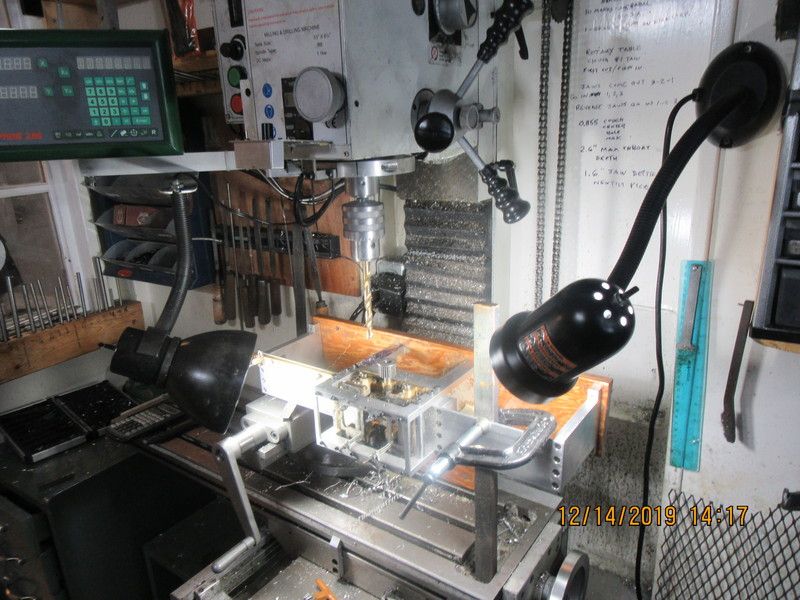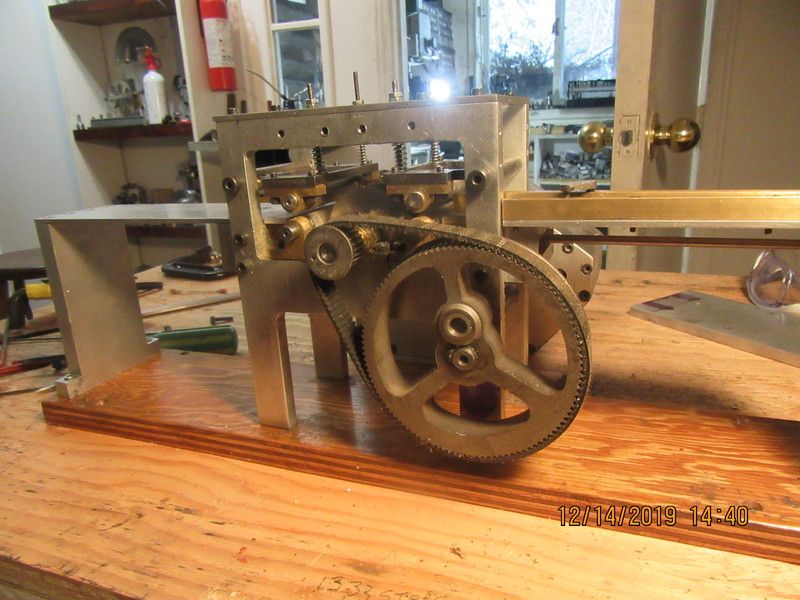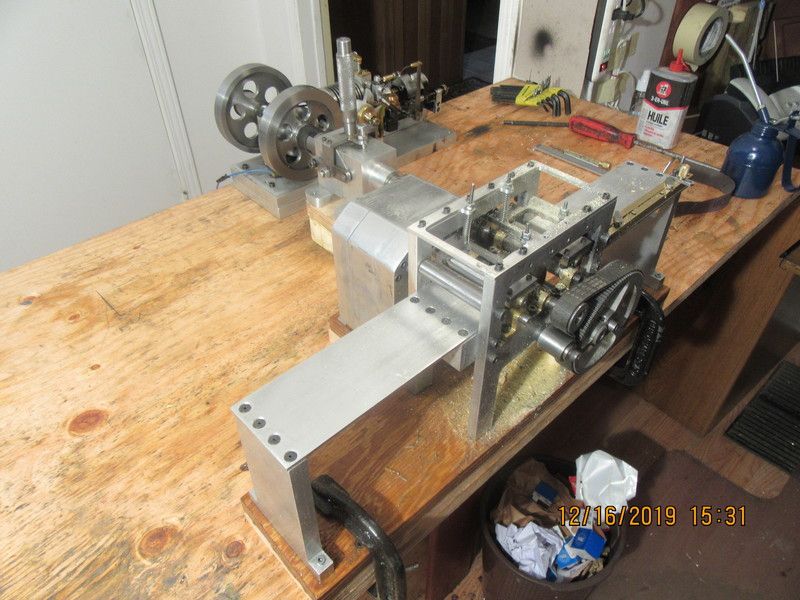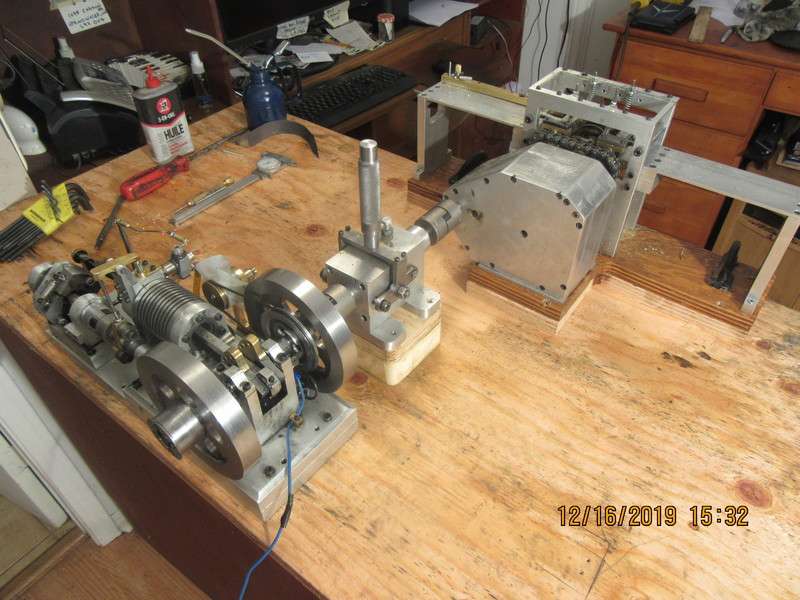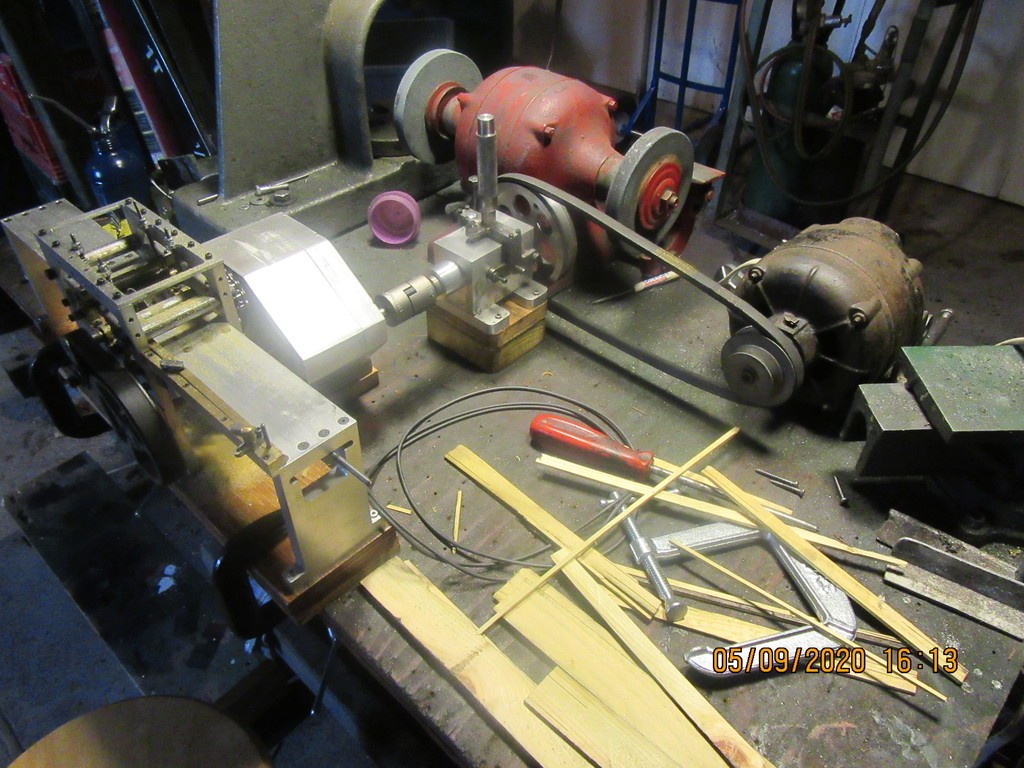Yesterday and today have been a voyage of discovery for me. I have tried three different engines on this set-up, one being my throttle governed engine as seen in the previous post. Next up was the hit and miss side shaft engine, and then the Rockerblock engine. All of these engines have a 1" bore and a 1 3/8" stroke, and none of them have the power to drive the edger. This surprises me, but surprises are what you get when designing and building from scratch. Where do I go next?---Good question. I do have a twin cylinder engine that I built a few years ago, but it has a hand operated throttle. The perfect engine for this job would be throttle governed, whereby when there is no load on the fast idling engine, it does just that--sets there on a fast idle. As soon as it senses a load coming onto the engine, (because of the engine slowing down) it fully opens the throttle and holds the throttle open until the revs come back up to the "set point". One of the problems with using my twin cylinder engine to run the edger, is that the "off" side of the crankshaft is not accessible to attach a drive coupling to. I can probably work around that, but there is the issue of tuning the twin into a throttle governed engine. I have to dwell on this one for a while before deciding what I'm going to do. The edger itself is a success. I will post more of this after it becomes a little clearer to me what to do. Merry Christmas to all of you.---Brian
